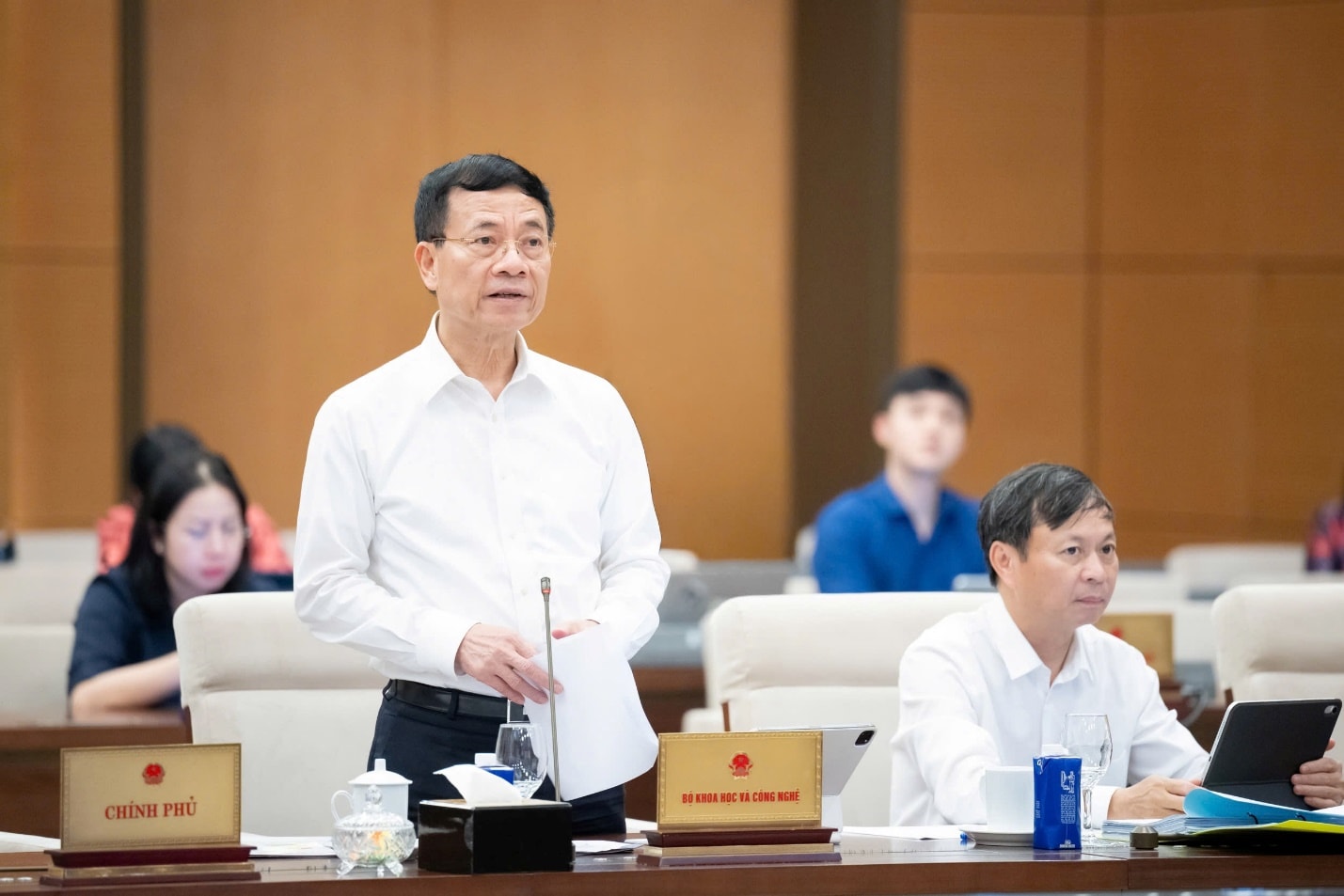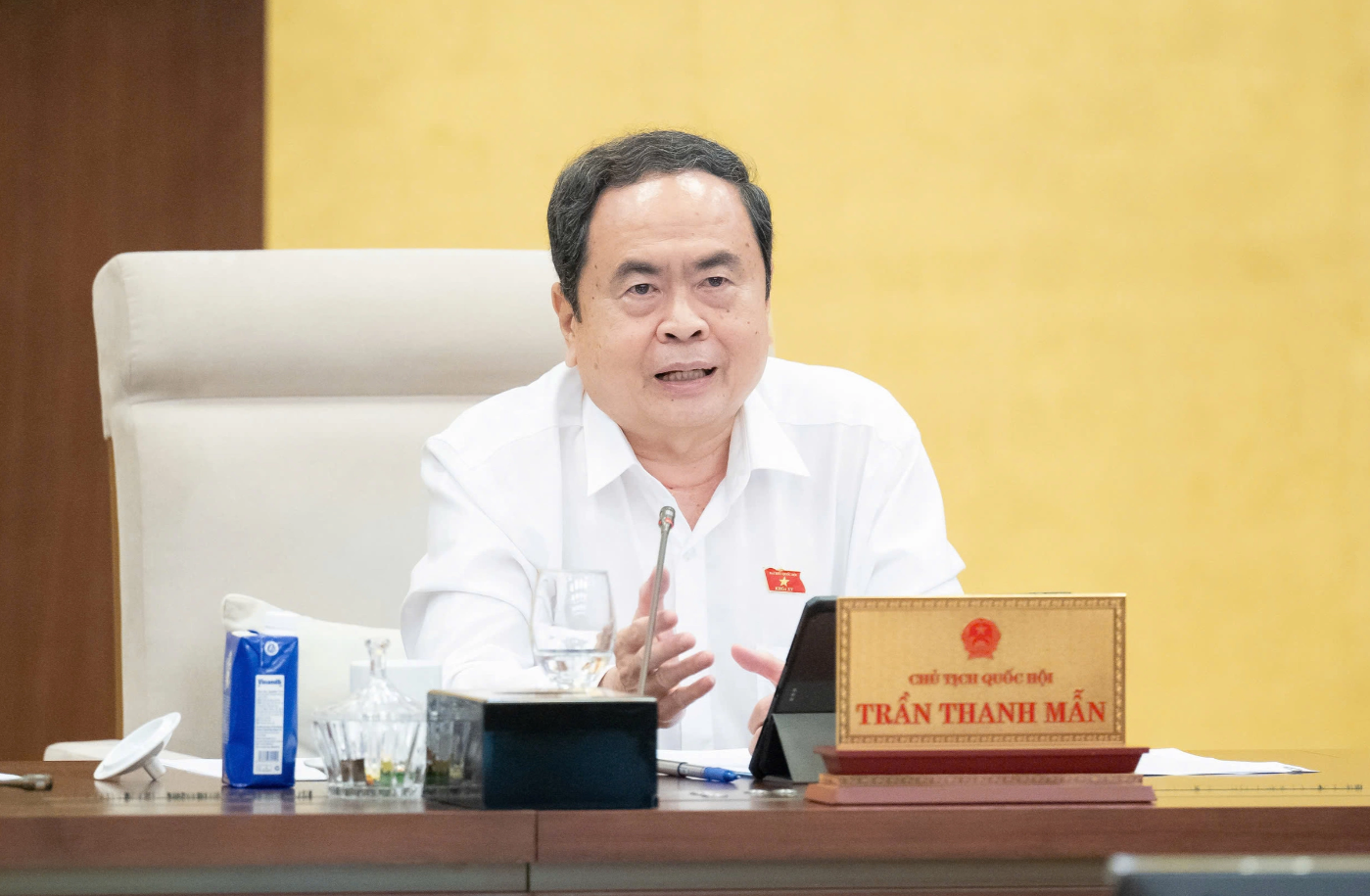Promoting technology transfer, unlocking innovation
The promulgation of the Law amending and supplementing a number of articles of the Law on Technology Transfer aims to continue to improve the legal framework to promote the transfer of technology in an effective, synchronous manner, in accordance with practical requirements and socio-economic development, while catching up with the world trend in technology transfer.
At the 50th session of the National Assembly Standing Committee, chaired by Vice Chairman of the National Assembly Le Minh Hoan, delegates reviewed the proposal and the preliminary appraisal report on the draft Law amending and supplementing a number of articles of the Law on Technology Transfer.
Improving the legal framework to promote technology transfer activities
Presenting the proposal for the Law Amending and Supplementing a number of articles of the Law on Technology Transfer, Minister of Science and Technology Nguyen Manh Hung stated that although the 2017 Law on Technology Transfer has created a legal corridor for technology transfer activities within the country, from abroad into Vietnam, and from Vietnam abroad, the law has now revealed several limitations. It has not kept pace with the rapid global development of science, technology, and innovation (STI), and does not yet meet the demands of Vietnam’s current breakthrough phase in STI and digital transformation.
The amended Law on Technology Transfer continues to inherit the scope of regulation from the current law, while expanding the range of technology transfer subjects in line with global trends, and broadening the scope of technology appraisal beyond investment projects.
Accordingly, the scope of the Law on Technology Transfer has been revised and supplemented to cover regulations on technology transfer activities in Vietnam, from abroad into Vietnam, and from Vietnam abroad; the rights and obligations of organizations and individuals involved in technology transfer activities; technology appraisal; technology transfer contracts; measures to encourage technology transfer and develop the science and technology market; and state management over technology transfer.

The promulgation of the amended Law aims to further improve the legal framework to effectively and comprehensively promote technology transfer activities in line with practical needs and socio-economic development orientations, while keeping pace with global technology transfer trends. It also seeks to enhance decentralization, simplify administrative procedures for technology transfer, and strengthen information and statistical work to support state management.
After revision, the Law on Technology Transfer consists of 6 chapters and 60 articles (retaining the same number of chapters but reducing one article compared to the current law).
The contents of amendments and additions focused on 6 policy groups, namely: Determining the scope of technology adjusted in the Law to cover new technologies according to the trend in the world and practical requirements; Support and promote the transfer of endogenous technology, including technology transfer between enterprises / organizations, individuals in the country, commercialization of research and development results; Development of scientific and technologically integrated technology.
In reviewing the draft, Vice Chairman of the Committee on Science, Technology and Environment Nguyen Phuong Tuan stated that the Standing Committee agreed with the overall approach, objectives, and scope of the amendments. The draft law aligns with the Party’s renewal policies, addresses existing management challenges, meets practical and international integration requirements, and has been prepared seriously in accordance with Article 51(5) of the Law on Promulgation of Legal Documents. The draft meets the conditions for submission to the National Assembly under a shortened procedure.
Regarding the scope of adjustment, the Standing Committee basically agreed with the expansion of some technology transfer objects in line with the trend of the world (such as green technology, clean technology).
However, with the expansion of the scope of “technological appraisal” that is not limited to “investment projects” as stipulated in the current Law on Technology Transfer, it is necessary to continue to review to ensure the feasibility in the implementation organization and synchronize with relevant laws.
Regarding the State’s policy for technology transfer activities, the Standing Committee asked the presiding agency to discuss and study supplement the mechanism of encouraging strong and substantive enough to effectively implement the policy of “focusing on spreading technology from foreign-invested enterprises to domestic enterprises”; at the same time, studying the content of supplementing the subjects of small and medium enterprises.
Bridge to overcome the situation of “hanging” research
Speaking at the session, Chairman of the National Assembly Tran Thanh Man emphasized that the purpose of amending the law is to comprehensively regulate technology transfer activities in Vietnam (from abroad to Vietnam and vice versa); he proposed to focus on amending this law to quickly institutionalize Resolution 57-NQ/TW.

Emphasizing the requirement to overcome the research situation and then, the "hanging" study, thereby supporting start-ups, contributing to improving labor productivity and digital economic value, the Chairman of the National Assembly assesses, the law must ensure feasibility, meet the requirements of integration, must complete synchronously and simplify procedures; expand support for difficult areas and strategic technology.
Along with that, it is necessary to integrate strong preferential policies to attract strategic investors and leading enterprises in foreign-invested technology (FDI) in Vietnam, along with the requirement to transfer technology from FDI enterprises to domestic enterprises.
At the same time, it is necessary to have a mechanism to measure the rate of commercialization of research results, technology transfer and have an effective monitoring mechanism.
Explaining and clarifying the opinions of delegates, Minister Nguyen Manh Hung admitted that the technology transfer operation in the past time is still weak and inefficient, the reason is that the past period is focused on processing, assembly and also not paying attention to technology.
Now, the development phase is based on S&T, the amendment of the Law on Technology Transfer must create a breakthrough development of technology transfer, commercialization of research results, reduce administrative procedures, the Minister said.
For the first time we divide into 3 levels of technology transfer, from application to mastery and research and development to have appropriate policies.
Currently, we stipulate that the first level is to buy and use is calculated with a tax deduction of 100%; the second level is digestion, i.e. understand technology, technological improvement allows 150% of the deduction; the level of 3 creative levels, like research and development, enjoys a preferential rate of 200% tax deduction such as the Law on Science and Technology and the Mekong Delta. Sufficient support for the transferee, the forwarder and the connected intermediary.
Minister Nguyen Manh Hung also noted that motivating the transfer of technology through financial, tax, legal, inter-construction support policies, through technology innovation funds and considered technology transfer as a high level of technological innovation to support. At the same time, the detailed regulations on technology transfer will be regulated by the Government. /.
Translated by Vietnam Journal of Science and Technology (VJST - MOST).
